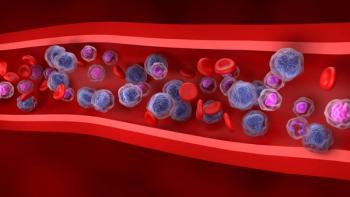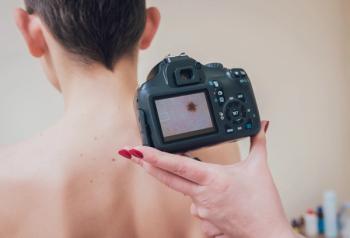
Human Guinea Pig: Cupping for Lymphedema
One survivor's personal experiment in finding relief from lymphedema.
Disclaimer: I am not a medical professional and I have no training in physical therapy. Please check with your doctor before considering this treatment.
Cupping has been in the news a lot lately. With the Olympics in full swing, Michael Phelps and several other athletes recently brought cupping into the world’s view. Cupping is part of traditional Chinese medicine practices that involves placing small clear glass or plastic cups on the body. There are two methods for cupping. One involves using heat and bowl-shaped glass cups. The other involves using a type of trigger suction gun and plastic bell-shaped cups.
I’d never heard of cupping until about a month ago after I had been sent to a physical therapist for spine pain. I was shocked when the therapist used deep tissue massage and then began placing these strange little cups all over my back. It felt really odd and I thought I’d stepped into some New Age practice, but after I had been on the therapy table for about fifteen minutes, the weird feeling subsided. I realized the cups were drawing blood up into my tissue and I was actually feeling better.
Since a bilateral mastectomy and the removal of lymph nodes, I’ve suffered from lymphedema, which is a disruption to the flow of lymphatic fluid in the body. When lymph nodes are removed, the highway that carries the lymphatic fluid throughout the body becomes clogged or congested, and the fluid no longer flows freely. It can often build up in various areas of the body causing extreme swelling, discomfort and pain. My lymphedema was located in my upper arms and in the area of my chest just beside my armpits. I have been struggling with this condition for over two years. I'd been sent for manual lymphatic drainage by a trained therapist. I’d used compression sleeves, as my breast surgeon had prescribed, but they did nothing to remedy the fluid buildup. I’d tried a recirculating compression pump at the behest of my oncologist but had still not received relief from the painful condition. I was desperate to find a way to combat my lymphedema, so I decided to make myself a human guinea pig.
On my next visit to the physical therapist, I asked a lot of questions about cupping. I asked exactly how the cups were to be placed and how long they were to be left on the skin. I asked to see the cupping kit my therapist used and asked about various types of kits available. I wanted to understand the procedure, and I had an ulterior motive. As I was asking the therapist about cupping, I was wondering if it might help with my lymphedema.
When I got home, I got on Amazon. I found the exact cupping set my therapist used and was surprised to find it wasn’t very expensive. I ordered the kit and waited about a week for it to arrive. When the kit came, I was so excited! I knew I was grasping at straws, but I really wanted to see if there was a chance cupping could relieve the swelling in my upper arms and chest area.
In order to conduct my experiment, I knew I’d need to keep a record of body measurements. I had to ask for my husband’s help in taking the measurements, but he didn’t seem to mind. I recorded the pre-cupping measurements in a notebook. Now that I had my standard, I was ready to begin treatment. During the first “session,” I asked for my husband’s help in placing the cups exactly where they needed to be. I wanted to target the specific areas that were giving me problems. I watched in amazement as the skin puffed up into the cups and began to turn a deep shade of red. (I’d been unable to see exactly what happened during the cupping sessions on my back at the physical therapy center, so I was really interested in learning how the process worked.) I didn’t really know how long to leave the cups in place but thought it would probably be best to only leave them on five or 10 minutes. I had to laugh as I looked at myself in the mirror. Little clear plastic suction cups were stuck all over my upper arms and chest wall. Each of the cups was filled with angry, deep red mounds of flesh. After the allotted time, I asked my husband to remove the cups from the back of my arms and on my chest wall. There was a small release valve at the top of each cup. As he lifted the release valves, the suction underneath the cups let go and the cups were easily removed. I was left with lots of goofy looking reddish circles on my body. As my husband placed the plastic cups back into the kit for safe keeping, I asked if he’d help me take new measurements. There was only a very slight change. I hadn’t expected there to be a dramatic change at this point but hoped for positive evidence a few hours later.
About six hours later, I took new measurements and was pleasantly surprised to find just under an inch had been removed from the girth of my upper arms. I could feel a marked difference. The swelling had greatly lessened and I was able to move my arms more easily. The area in my upper chest was also visibly smaller. I was so excited! Maybe I was on to something. Maybe cupping would be a viable alternative to the former treatments I’d been using for lymphedema.
Cupping was inexpensive. It was also easy to apply the cups and didn’t take long to complete a cupping session. I could leave the cups on for as long as I wanted or shorten the time as I needed to do so. As long as I followed the guidelines included with the cupping kit, I knew I was doing this in a safe and effective manner. The instructions were clear and easy to understand.
I’ve been doing the cupping experiment on myself for two weeks. I do it every other day and have found a reduction in the measurements after each session. I’ve also found the lymphatic fluid doesn’t seem to collect as quickly as it did in the past. Before beginning cupping, I would wake every morning with extreme swelling that would not dissipate throughout the day, even after having had a therapist provide manual lymphatic drainage, using compression sleeves or using the recirculating compression pump.
I was overjoyed to have such great success in such a short period of time. Cupping will be a part of my alternative therapy for fighting lymphedema from this point forward. I don’t know if there has been much research done in the breast cancer world on the benefits of cupping, but I would hope doctors and therapists might consider it to be a valuable resource. I know from firsthand experience that it’s working for me!





